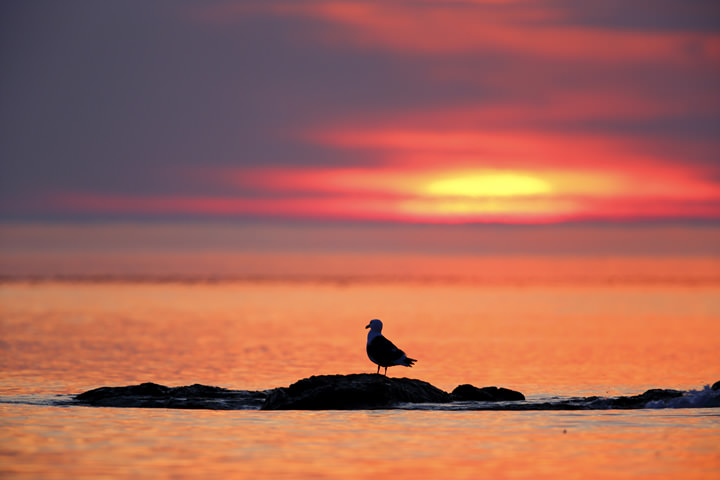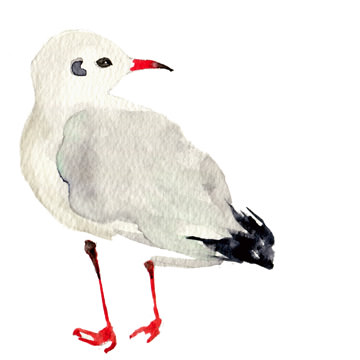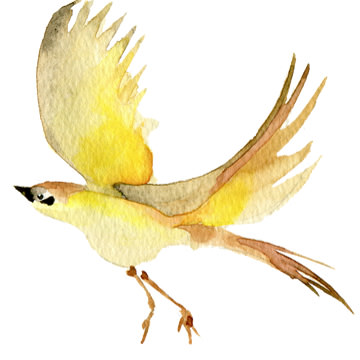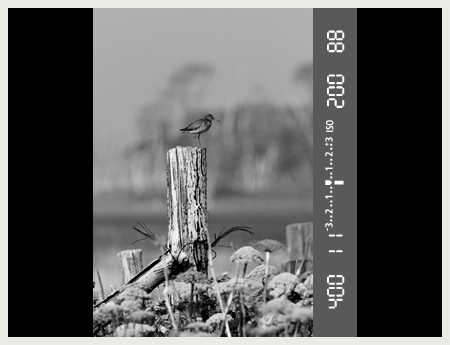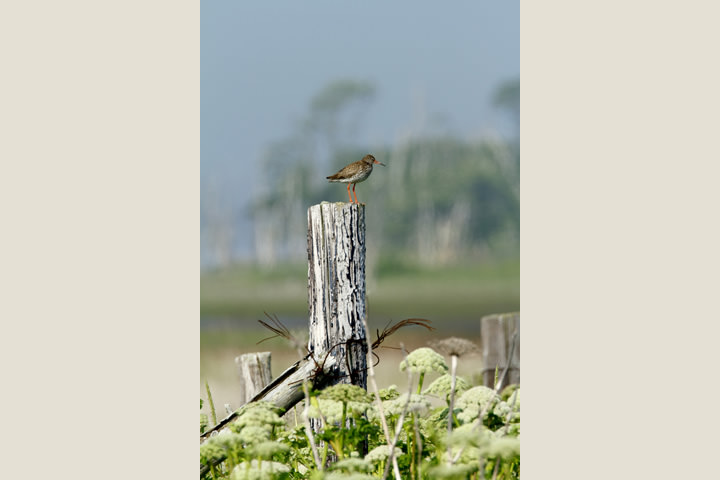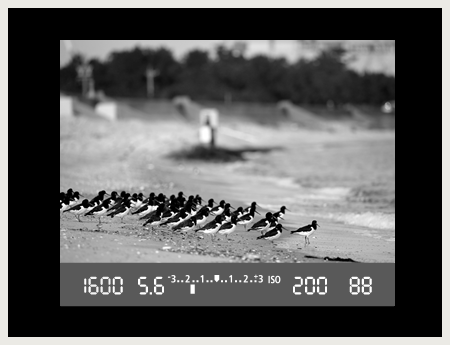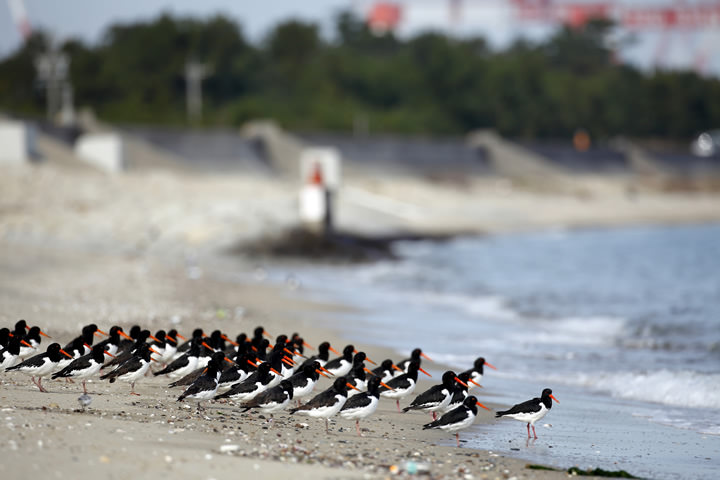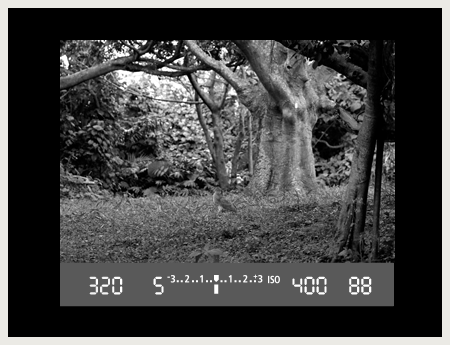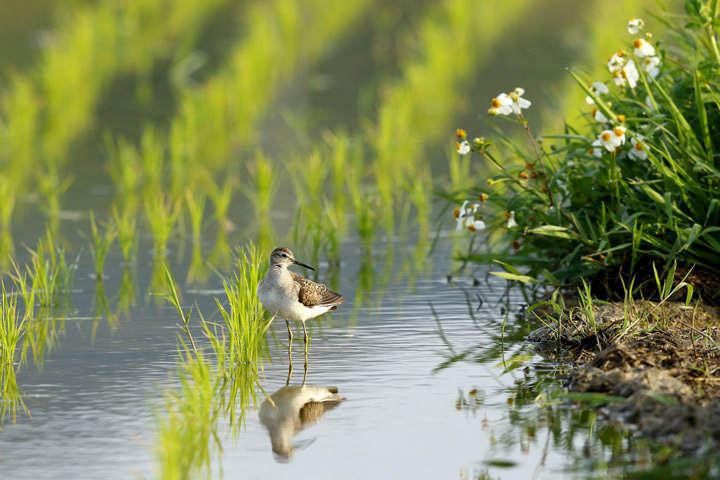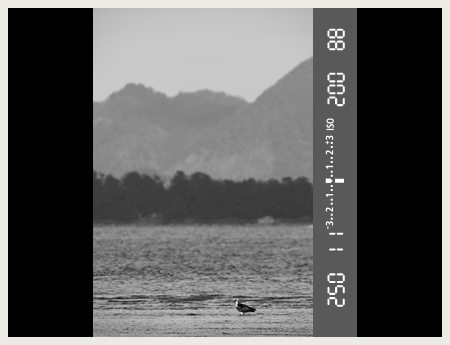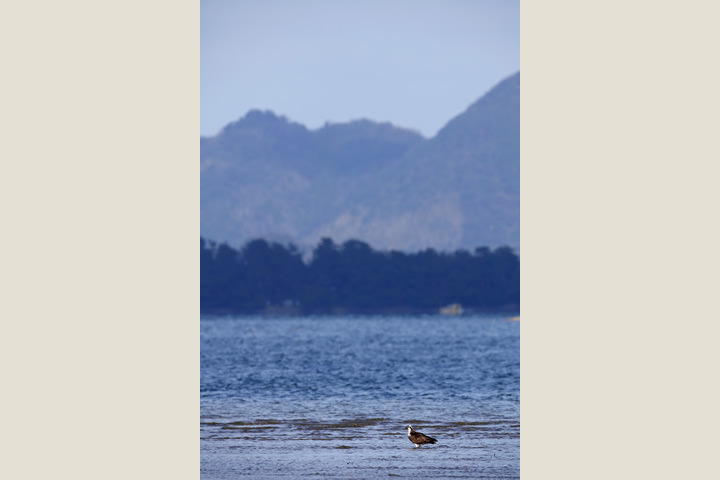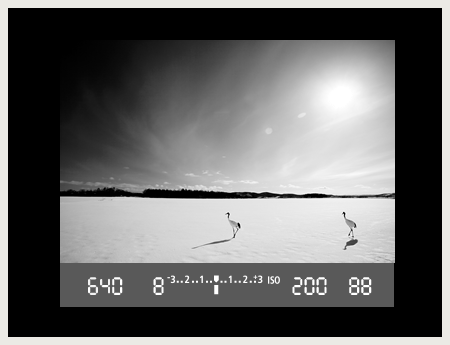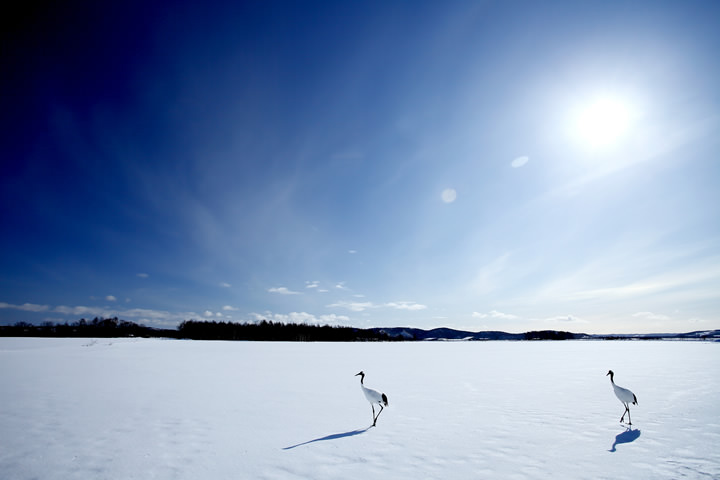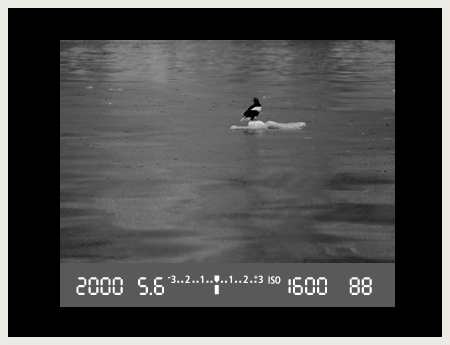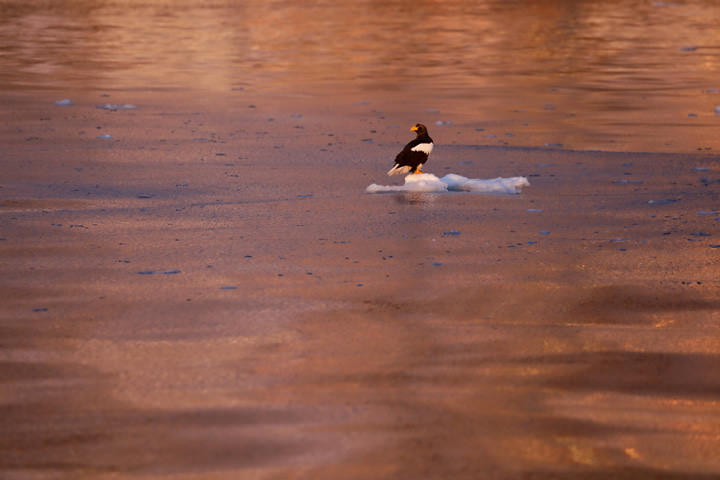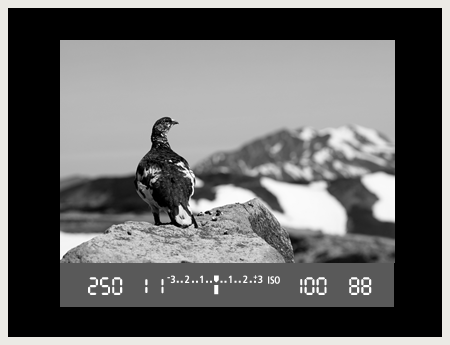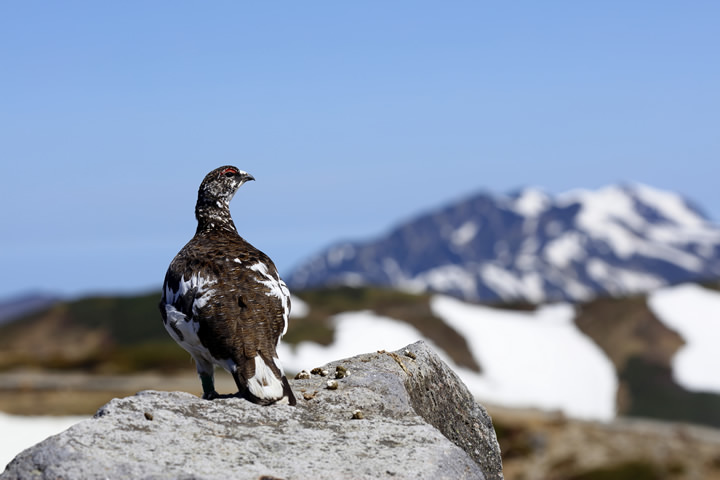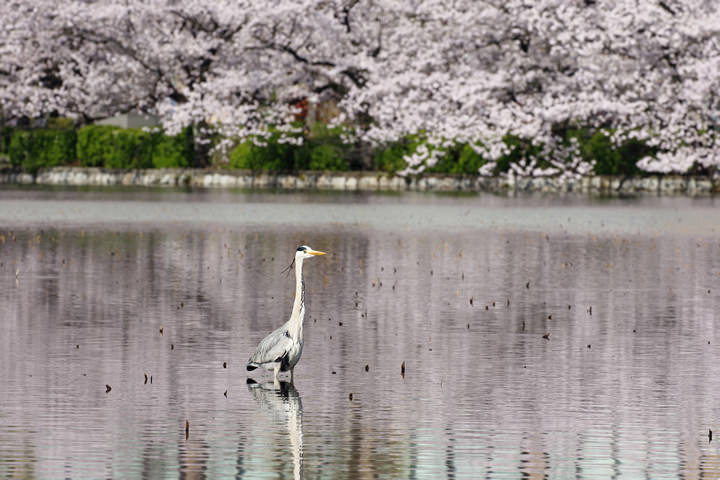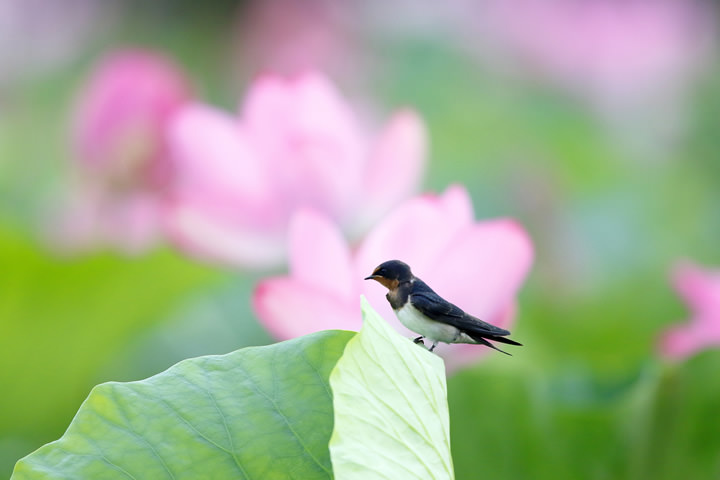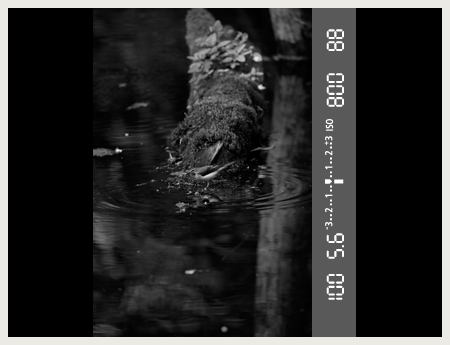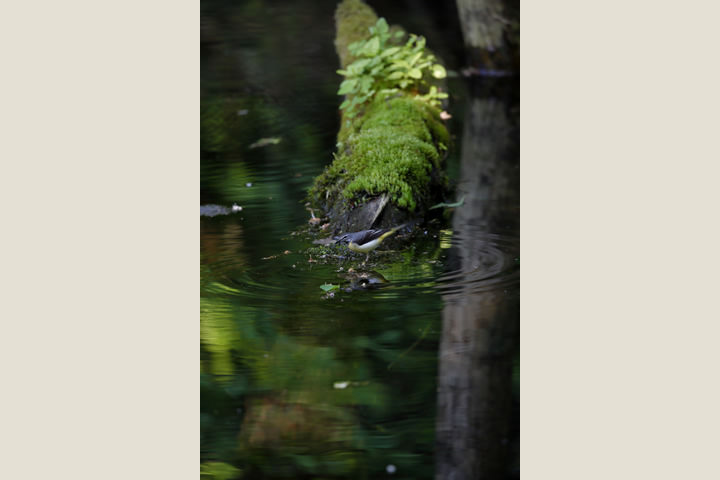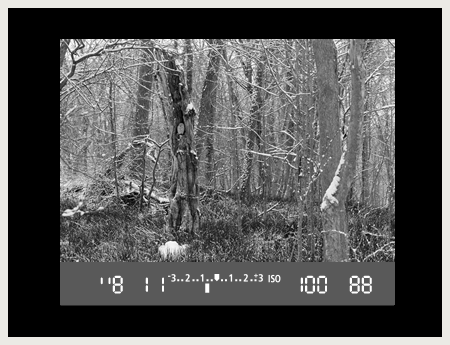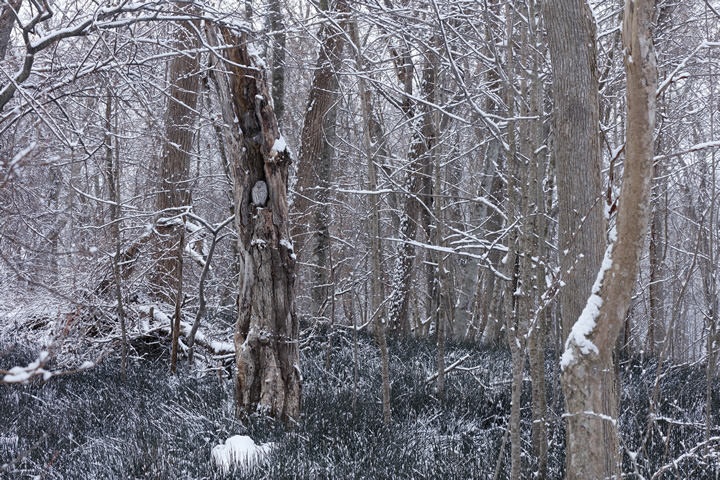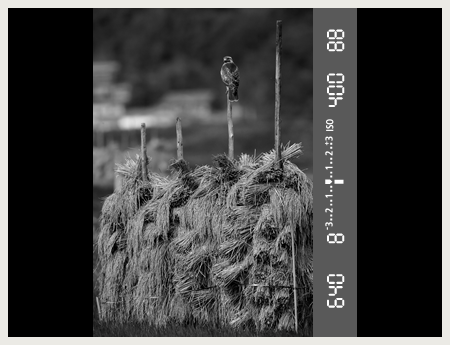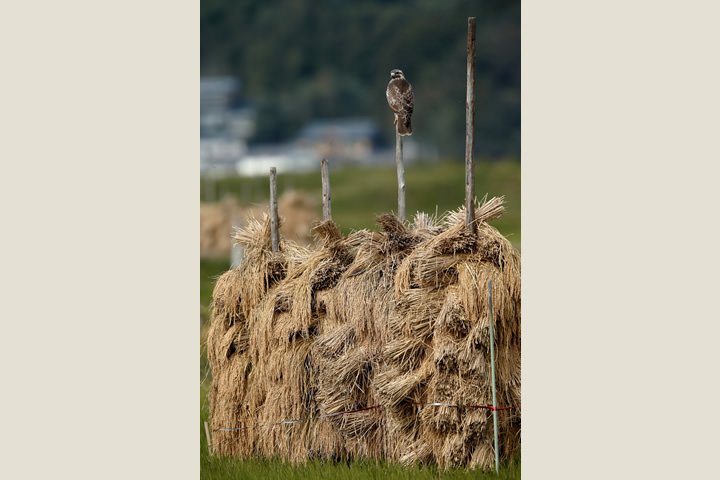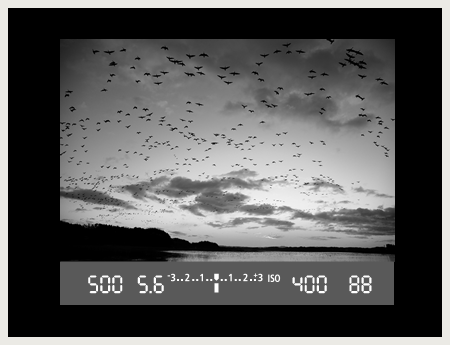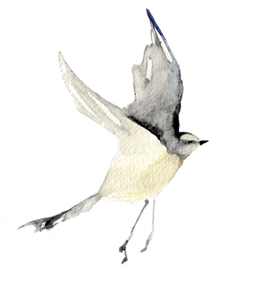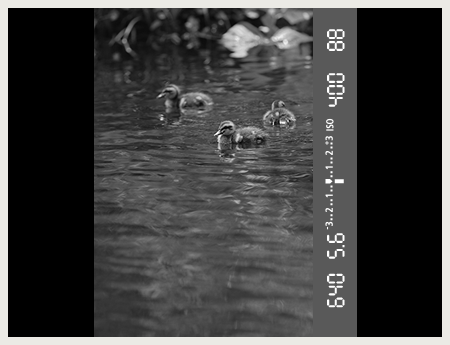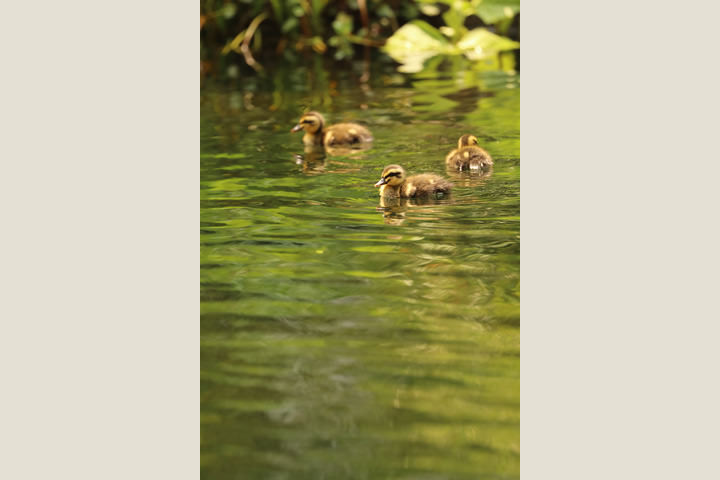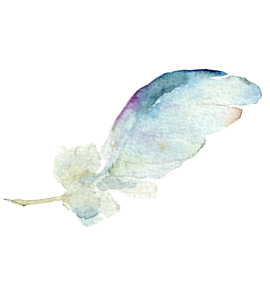With the reflection of green on the water in mind, I took this shot of some chicks that you would see at this time of year. I took some close-up shots as well, but when you take this kind of scenic photo, you get a real sense of their daily life and it makes a heart-warming photograph. I think you would perhaps get a better feeling of the season though if I included more of the young greenery in the background.
how to
photograph
wild birds
Scenery and birds
Japan has four beautiful seasons, and the wild birds that live here have a close connection with the seasons. It is very interesting to see the differences among the birds, such as summer birds and winter birds, as to the areas where they live and the habitat they prefer. Let’s aim to photograph wild birds in scenes with a seasonal feeling, providing momentary glimpses of their daily lives and portraying the beauty of life.
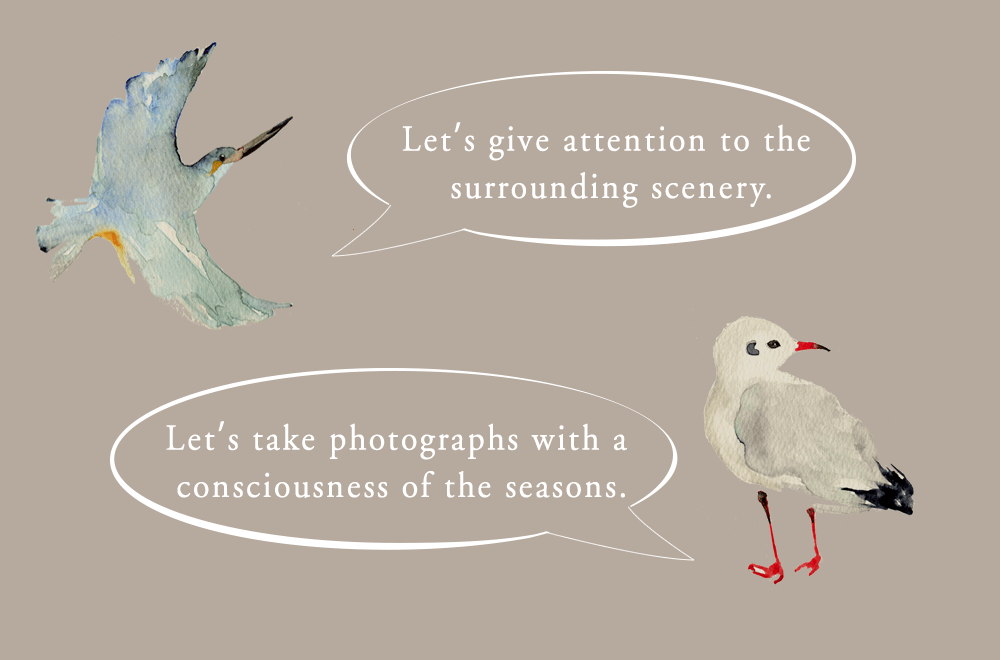
To get a shot of a bird enveloped by the glow of the sun setting on the horizon, I went down to the water’s edge and continued shooting. Some gulls and cormorants were resting on the rocks, but the appearance of the rocks changed with the ebb and flow of the tide. When you include natural phenomena, the shot is even more of a one-time opportunity. Getting a shot of a flock of birds is good, but this time I was looking for a lone Slaty-backed Gull.
- Aperture value: f/8
- Shutter speed: 1/100 second
- ISO speed: ISO200
- Exposure compensation: 0
- Focal length: 1000mm equivalent (used a 2x extender at 500 mm)
- DSLR Camera (35mm full-frame image format)
